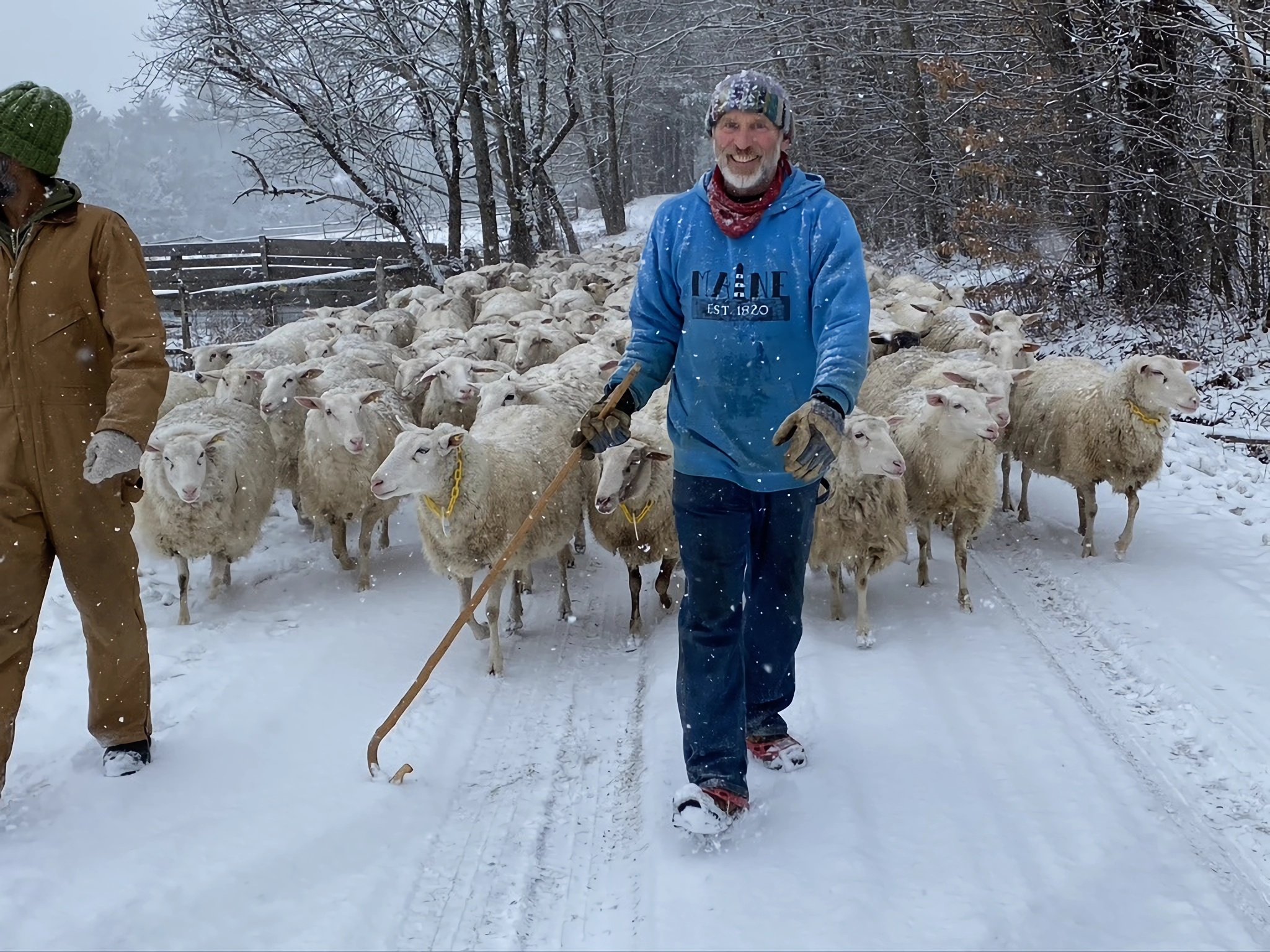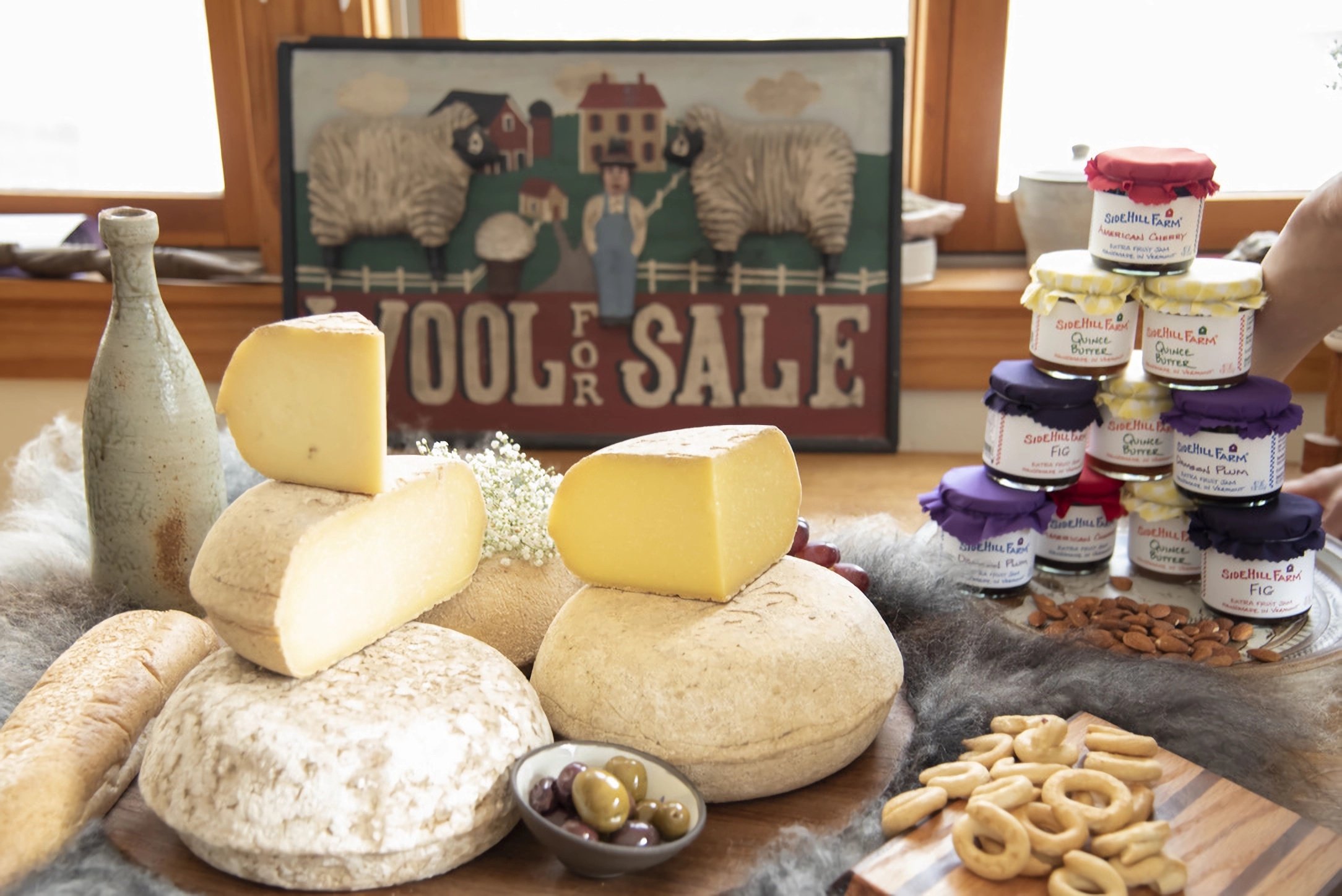Fleece to Feast: Vermont Shepherd is a Model of Sustainable Family Farming
Sheep photo courtesy of Vermont Shepherd
The verdant hills near Vermont’s Green Mountain National Forest are a sublime spot for the country’s oldest sheep dairy. Vermont Shepherd, situated on 250 acres in rural Putney, has practiced sustainable farming here since 1965, where 135 varieties of grasses and plants provide the most delicious nutrition for the 350-700 ewes, rams, and lambs to graze. Two types of cheeses reflect that biodiversity in their rinds and dense flavor, and come of age in a subterranean cave. Here’s what makes them so unique.
Background
David and Yesenia Major photo courtesy of Vermont Shepherd
The dairy and its vast, rolling pastures are part of owner David Major’s family farm, where he grew up in the 60s and 70s tending the sheep, shearing their wool, and selling them for meat. When he graduated from college in 1983, he returned to this life that he knew best. He introduced milking a few years later, when he took over operations and added cheese to their busy roster. He married Yesenia Ielpi after she came to the Green Mountain State in the early 2000s, and they now run the farm together with three generations of family shepherds, including their five children and Yesenia’s aunt and uncle, ranging in ages from 15 to 63.
Major milks the ewes twice daily, rising at 4:30 am. In February and March, the family shepherds shear the wool that they sell raw or Yesenia makes into clothing, and they manage lambing season each spring.
Naturally and intentionally sustainable
Sheepherding in winter photo courtesy of Vermont Shepherd
The Majors foster sustainability and maximize biodiversity in everything they do. They don’t even mow the lawn, and instead rely on intensive rotational grazing, where they move the sheep to a new pasture every 12 hours. Essentially, the animals eat the grass and then relocate, while the grass grows back by the time the sheep return to that pasture. This “super method of foraging,” Major says, allows the sheep to ingest diverse flora, which flavors their milk with notes of the property’s wildflowers and lemongrass, thyme and spearmint.
“Typically, in plants, in later spring and early summer they are blossoming and concentrating on reproducing. That’s the time the cheese has the most flavor,” Major says. “Then in fall, the plants are trying to build up resources for the winter. That cheese… is wonderful and high in nutrients but not as flavorful. We attribute that to the plants the sheep are eating.”
The farm also has solar panels, plus the family rides bikes from the barns to the pastures, heats using a wood-powered furnace, and drives electric powered-vehicles.
Cheese cave
Inspired by cheese makers in the Pyrenees in 1995, Major built a 1,500-square-foot cave into the hillside at the edge of the woods near the barn. It’s completely underground, except for the entrance, and is made of 10-foot-wide stone walls. After the cheeses are made in the cheese house, they are transported here to age on ash boards that eject like skewers from the wall. They shape the wheels with a tapered side, like a loaf of bread, rather than a straightforward disc shape. The cave’s affineur Mike Labine manually turns and brushes all the cheese twice weekly, 2,000 at a time, and up to 20,000 wheels annually, to help cultivate the natural, plastic- and wax-free rind.
While the subterranean cave is naturally cool and damp, five minutes of every half hour there is air exchange, which removes ammonia and brings in fresh air. This ecological milieu helps the cheese mellow while forming its mature flavors, and serious fans will notice how extreme weather impacts the rind and flavor.
“In wet weather, spore-forming b-linen bacteria comes in, so the cheese turns more orange. That brings in its own set of flavors. In drier weather, there tends to be more white penicillin and candidum molds,” Major says. “The cave keeps cool on its own, rather than using refrigeration. It’s a good environment for natural cheese that is made of mold. It’s been a fabulous place to cure cheese, and very successful.”
It does affect the smell, too, and he laughs that some people disparagingly call it the dirty diaper smell. “In drier weather, there is more penicillin, which is more earthy. It’s distinctive in my head but how to put words to it—it’s like a fresh artisanal bread,” he says.
The Cheeses
Vermont Shepherd Cheeses photo courtesy of Vermont Shepherd
The two semi-hard cheese profiles reflect their commitment to the land. Verano, the flavorful cheese of summer, is sweet, rich, and earthy, with hints of clover, mint, and thyme. It ages for three to five months in the cave, and ripens by August. It consists exclusively of their resident sheep milk, while Invierno, their winter variety, combines sheep and cow milk from their neighbor’s farm. Boasting stronger and fuller flavors with a spice, Invierno ages five to nine months and ripens by January. They also make a smoked version of Invierno, by smoking the cheese wedges with fire from their neighbor’s apple tree wood at Green Mountain Orchards.




